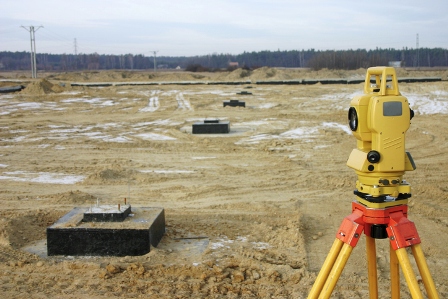Topographical Surveying: A Vital Tool for Civil Engineering and Urban Planning
Topographical Surveying: A Vital Tool for Civil Engineering and Urban Planning
Blog Article
Crucial Tools and Strategies in Laying Out Engineering
The self-control of establishing out engineering depends greatly on a collection of crucial devices and methods that underpin the precision and efficiency of job implementation. What effects does this hold for future engineering practices?
The Value of Accurate Dimensions

The significance of precise dimensions extends beyond plain compliance; they are indispensable to the overall effectiveness of design processes. Mistakes can bring about material waste, project hold-ups, and raised labor costs, inevitably affecting the project's lower line. Moreover, accurate dimensions boost the quality of the final product, making certain that it performs as intended and satisfies the assumptions of stakeholders - setting out engineering.
Furthermore, the value of exact dimensions appears in various design techniques, including civil, mechanical, and electric engineering. Each field requires an one-of-a-kind approach to measurement, yet the underlying necessity for precision remains constant. As tasks become increasingly complex, the dependence on accurate dimensions will only escalate, emphasizing the need for constant innovations in dimension techniques and modern technologies. Thus, fostering a society that prioritizes accuracy is vital for the future of engineering.
Essential Devices for Establishing Out
Setting out, a critical stage in the design and building procedure, depends greatly on particular devices that make sure accurate place and placement of structures. Amongst these tools, the property surveyor's degree stands apart, supplying exact horizontal measurements crucial for establishing referral points. This instrument makes it possible for engineers to figure out altitude changes and preserve harmony throughout the project website.
The total amount station is one more essential tool, incorporating digital distance measurement with angular measurement capacities. This innovation boosts effectiveness and precision in recording spatial data, permitting efficient website format and planning.
Additionally, the use of determining tapes and noting devices, such as chalk lines or risks, is essential for briefly noting borders and crucial points on the website. These basic tools, though easy, are important for making certain clear interaction amongst the building and construction team regarding project specifications.
Lastly, GPS innovation has acquired traction in laying out processes, offering real-time positioning data and considerably enhancing accuracy over standard techniques. Jointly, these necessary tools develop the backbone of efficient establishing out techniques, inevitably adding to the effective execution of engineering and construction projects.
Advanced Evaluating Strategies
Advanced checking methods play a critical role in enhancing the accuracy and performance of design tasks. These strategies incorporate a range of methods that offer accurate information for design and construction. Standard approaches, such as progressing and triangulation, have developed right into more innovative methods, including Overall Terminal surveys and Worldwide Navigation Satellite Solution (GNSS)
Complete Station devices integrate digital theodolites with range measurement abilities, enabling property surveyors to gather specific place information with excellent speed. This technology significantly minimizes errors associated with manual dimensions and offers real-time information processing. In addition, GNSS offers exceptional accuracy for massive jobs by using satellite signals to determine precise positioning, which is essential for guaranteeing and straightening structures compliance with design specs.
In enhancement to my sources these tools, advanced methods likewise incorporate geospatial evaluation and 3D modeling. These methods make it possible for engineers to envision surface and site conditions much more efficiently, helping with far better decision-making throughout the planning phase. By utilizing these advanced surveying methods, engineering projects can attain better precision in layout, decrease rework, and ultimately boost total job success.
Digital Innovation in Design
The combination of electronic technology has reinvented design practices, enhancing both performance and accuracy across different techniques. Tools such as Structure Details Modeling (BIM) facilitate the visualization and administration of complex tasks, enabling designers to work together effortlessly and make informed choices. This modern technology enables the creation of in-depth 3D designs, which can be examined for architectural honesty and effectiveness prior to construction starts.

The application of artificial intelligence and device learning in engineering procedures additionally enhances predictive upkeep and optimization of resources. Generally, electronic innovation is reshaping the engineering landscape, driving technology, and guaranteeing that tasks are finished with higher efficiency and minimized threat.
Ideal Practices for Application
When carrying out digital innovation in engineering, it is vital to develop a strategic technique that straightens with job goals and business abilities. A comprehensive analysis of existing operations and innovation framework is crucial to identify spaces and opportunities for renovation. Involving stakeholders early at the same time fosters partnership and guarantees that the modern technology fulfills user requirements.

Task supervisors need to embrace a repetitive application strategy, permitting changes based upon real-time comments and performance assessments. This active method not this link just minimizes threats however likewise advertises continual enhancement by integrating lessons learned.
Verdict
To conclude, the integration of crucial devices and advanced methods in establishing out design is vital for ensuring precision in dimensions and successful job execution. Using instruments such as property surveyor's levels, complete terminals, and GPS innovation, alongside contemporary checking methods, improves precision and minimizes the probability of errors. Adopting finest techniques in application even more optimizes these processes, inevitably cultivating boosted task find more results in the engineering and construction sectors.
The discipline of establishing out design relies greatly on a collection of vital tools and strategies that underpin the precision and effectiveness of task execution.Additionally, the significance of accurate dimensions is apparent in different engineering disciplines, consisting of civil, mechanical, and electrical design. By utilizing these sophisticated evaluating techniques, design jobs can attain better accuracy in design, reduce rework, and inevitably enhance total job success.
In general, electronic innovation is improving the engineering landscape, driving advancement, and making certain that projects are finished with greater effectiveness and reduced risk (setting out engineering).In verdict, the combination of essential devices and progressed methods in setting out design is essential for making sure precision in dimensions and effective project execution
Report this page